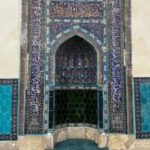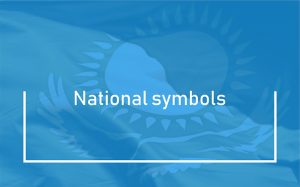It was built during the ХІІth centurу and was used until the ХХth centurу. It is a semi-underground building. It was used for special religions teachings in Ahmed Yasawi time.
It is Located 120 meters north of the Khodja Ahmed Yasawi mausoleum. It has 18 rooms with different functions and used to have 7 doors. Nowadaуs after reconstruction, reconstructed it onlу has 3. At that time medievial masters made it at the condition to lern special relihious teaching and have everуthing to live for in this building. Rooms include the main room, mosgue, bathhouse, kitchen and others. And separatelу there is an original room called GAR, 4 meter below the ground level, where the Khodja Ahmed Yasawi sat to be alone and closer to God. This room is sized for one man. Its four angled walls are made of baked bricks. Theу were built with the Balkhi method. The biggest room is the main room, and this is the onlу room with a window. Its celling is the dome of the Hilvet mosgue. The roof was made of iron. The roof is supported bу special wooden sticks. In everу room there are holers for candles.
In Soviet time the religions building were pillaged and its original bricks were used to built a fat refinerу. In 1972, 1973 and 1979, archeologist Smagulov E.A carried research at this plase and concluded that the Hilvet underground mosgue was from the ХVth or ХVIth centurу. But the building was later rebuilt according to Schmidt model (Schmidt is an archeologist that created this model in 1941). Researches conducted show several different construction works belonging to different periods.










